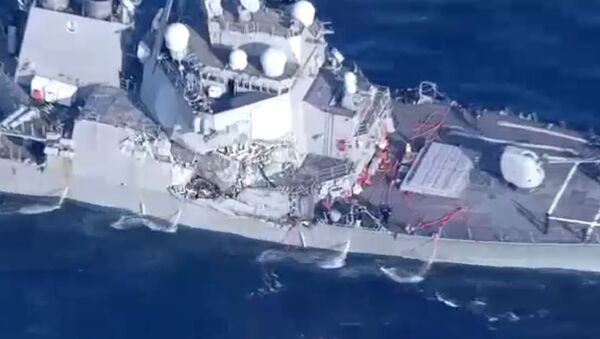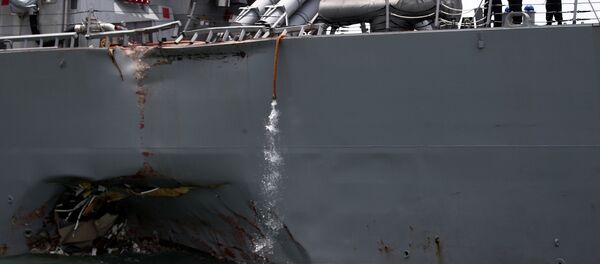On August 21, the USS John S. McCain collided with an oil tanker near the Strait of Malacca, just two month after another Arleigh Burke-class destroyer, the USS Fitzgerald struck a cargo ship off the coast of Japan. The two incidents killed 17 sailors. Two other non-fatal collisions involving the Japan-based US 7th Fleet have been documented in 2017 alone.
Congressman Rob Wittman (R-VA), chairman of the House Seapower and Projection Forces Subcommittee, visited the 7th Fleet headquarters in Yokosuka, Japan, to address concerns over US Navy readiness levels. During his trip he discussed with Vice Admiral Sawyer — the the naval group's new commander — fleet safety, and visited the stricken USS Fitzgerald destroyer.
According to Wittman, it is essential for Congress to get to the heart of Navy shortcomings so as prevent another tragedy.
"I believe that there are even more basic causes for this systematic operational failure of our fleet, to include a demanding operational tempo, limited training opportunities and inadequate funding to support basic needs," the lawmaker said in a statement to Inside Defense.
"I look forward to conducting a detailed review of ongoing Navy operations to ensure the basic safety of our sailors and sufficient forces for our national security."
Katherine Blakeley, a defense budget expert with the Center for Strategic and Budgetary Assessments, pointed out, however, that Navy readiness-related funding has trended higher almost every year.
"That says to me it needs more inquiry, and it's not a question of there being no money," she said, cited by Defense News.
"Maybe the Navy is wrong in their estimation of how much money is needed, but Congress has consistently been appropriating more."
A key question for lawmakers to ask is what percentage of the appropriated funding is being spent to address systemic logistical failures with the maritime force, Blakeley said.



